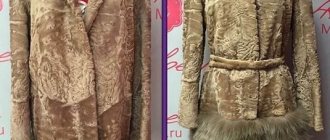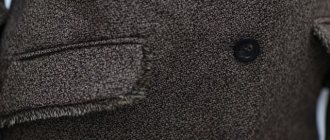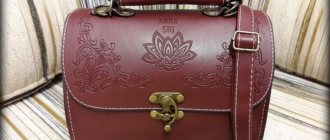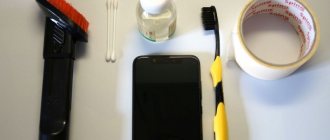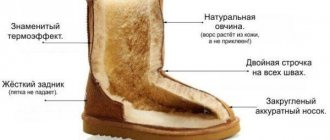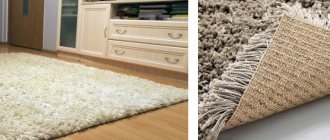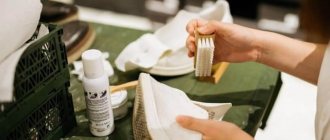Rabbit fur requires careful care and periodic cleaning, as salting is inevitable. This is a delicate material, when working with which you cannot resort to heat treatment. It is also not recommended to wash the product. Fluffiness, shine and gloss can be restored to a rabbit fur product at home using special means or folk methods.
Any product must be tested. The test is carried out on an inconspicuous small area of the product. After applying the substance, you should wait at least fifteen minutes , then remove it and analyze the result. Firstly, the product may not be effective for this type of contamination. Secondly, the reaction varies. If the product has faded, it is worth testing another method. In all cases, use white sheets to cover the surface on which the product will be processed. Keep brushes, vacuum cleaners, containers, and other tools clean.
Removing dirt
When cleaning with sorbents (substances that absorb dirt), cleaning is carried out until the color of the cleaning substance changes. A change in color means that the substance has reacted with dirt and absorbed it.
- Potato starch or semolina
Sometimes the question arises of how to clean a rabbit fur coat that is heavily soiled. Open the lining and wash it separately. Pour warm water into a large basin and dilute starch or cereal at the rate of 1.8 kg of dry matter per 10 liters of water. After rinsing thoroughly, shake off the fur well and lay it out on a clean white sheet. Then take a vacuum cleaner and a soft attachment (you can use a car one) and walk over the surface, cleaning it from any paste residue. Once dry, sew on the lining.
- Flaxseed, oat bran
Pour a handful of bran into a clean, dry Teflon-coated frying pan. Dry them without letting them brown. Lay the fur coat on a clean, dry surface, pour the bran onto the contaminated area and rub in. After rubbing, take a brush and carefully comb the product along the pile, trying not to damage it. Leave the product to dry completely and brush again.
- Talc or flour
Precautionary measures
Any fur, and especially rabbit fur, is a delicate material. Careless actions can ruin it forever. To clean a fur coat or cape and not aggravate its condition, you need to remember a few “taboos”:
- Under no circumstances should fur items be washed;
- It is not recommended to use strong chemicals to remove stains;
- no need to comb the fur with a fine-toothed comb;
- Do not dry fur clothes on a radiator or with a hot hair dryer.
Remembering these simple rules, you can cope with dirt on your own and wear your favorite fur coat for many years.
Fur products need care. This can be done at home with certain skills. Or take your fur coat to the dry cleaner. The cost of such a service will be significant, and in some cases it may even be refused. For home cleaning, consider what kind of fur your item is made of and what condition it is in. The degree of contamination also plays a role in the choice of cleaning method. You need to take care of your fur at the end of the season and before the start of a new one.
Sources
- https://poleznii-site.ru/dom/byt/kak-pochistit-meh-krolika-v-domashnih-usloviyah.html
- https://you.cleaning/chistka/kak-pochistit-mekh-krolika
- https://uborka.co/chistka/kak-pochistit-meh-krolika
- https://CleanAdvice.ru/stirka/meh-i-kozha/kak-legko-i-bezopasno-pochistit-meh-krolika-v-domashnih-usloviyah
- https://InfoUborka.ru/garderob/kak-pochistit-shubu-iz-krolika-kak-uhazhivat-za-shuboj-iz-krolika.html
- https://klining174.ru/stirat-shapku-krolika/
- https://bdsiz.ru/mozhno-li-postirat-vorotnik-iz-krolika-kak-pochistit-meh-krolika-v-domashnih/
Removing greasy stains
Solutions of active substances are used to clean the product from grease on collars, elbows, cuffs:
- Ammonia. Mix 1 tablespoon of ammonia with 3 tablespoons of salt and add 400 ml of water. Or mix ammonia and white spirit in equal proportions. Apply the solution to the contaminated area and leave for half an hour. Wipe with a clean damp cloth to remove any residue, then blot with a clean cloth.
- Hydrogen peroxide. The substance is used to combat yellow stains left after improper drying or contact with water. Mix 30 ml of 6% peroxide in 300 ml of clean water, add 20 ml of ammonia. After mixing the components, apply the solution using a spray bottle. The distance from the spray bottle to the product is 30-40 cm. Remove the solution with a brush, carefully combing the pile.
- Vinegar. Dilute one part 9% vinegar in two parts water. Moisten a cotton swab and wipe the dirt along the pile. Movements should be light, without rubbing. Soak a soft cloth in filtered water and blot the fur. After drying, comb the product. The vinegar solution makes the pile silky and eliminates greasyness. It is important not to confuse vinegar and vinegar essence. If you have an essence at home, it should first be diluted at the rate of one part of the active substance per liter of water.
- Gasoline, White Spirit. For this method you will need clean gasoline (you can use gasoline for lighters), a fur brush and corn starch. Gasoline can be replaced with White Spirit. It is recommended to carry out the procedure away from open fire and heating devices, in a well-ventilated area. Keep children and pets out of the room. Mix gasoline and starch until the consistency of sour cream. Rub the composition into the product, maintaining the direction against the pile, shake off the residue. If necessary, repeat cleaning several times. Leave the product in a ventilated area for several days to remove the smell of gasoline. If the smell remains after drying, wipe the fur with a sponge soaked in vinegar solution. The ratio of water and vinegar is 1 to 1.
- Grandmother's advice. In the time of our grandmothers, snow remained white for a long time; it was used for cleaning without resorting to other means. The technology is similar to carpet beating technology. The product is placed fur side down on clean white snow. The dirt is carefully knocked out. The product is left on a hanger until completely dry. This advice is still relevant for residents of settlements with good ecology.
Grandma's secrets
Previously, when there was a lot of snow in winter, it did not turn gray from car exhaust and production waste; a fur coat was cleaned outside in frosty weather. It was laid out with the pile down towards the snow and knocked out. As a result, all the dust and dirt came off the fur coat, it became clean and shiny. Today, only residents of ecologically clean areas where there is enough snow in winter have this opportunity.
However, you can still clean fur at home in a similar way by replacing the snow with a damp white cotton cloth:
- hang the fur coat on hangers;
- wrap it in a damp, clean cloth;
- knock out.
If heavily soiled, you need to change the fabric to a clean one and repeat the process. Once the dust has been removed, you can move on to cleaning organic contaminants - greasy areas on the collar or sleeves and, if necessary, stains.
Cleaning white fur
Particular attention should be paid to cleaning yellowed white fur. Before the procedure, it is recommended to clean the fur from dirt using sorbents:
- A solution will help refresh the color: 0.5 teaspoon of ammonia, 1 teaspoon of peroxide and 200 ml of water. The fur is wiped with a cloth soaked in the solution and left to dry.
- A mixture of purified gasoline and magnesium oxide (burnt magnesia) helps prevent yellowing. The pulp is rubbed in, after fifteen minutes the product is shaken off and the residue is removed with a soft brush.
Bran, talc and starch
Starch, semolina and bran are sorbents of natural origin - they absorb dirt and grease without having a chemical effect on clothing. Talc has an inorganic (mineral) nature, but it also adsorbs organic contaminants well and is safe for fur products. You can clean fur at home with all these means. The technology for removing contaminants using bulk materials is the same:
- apply starch to a hat or fur coat;
- rub it into the fur with light movements;
- leave for a while - 15-30 minutes;
- Shake out the fur item and comb out any remaining starch with a soft brush.
Starch and talc can be mixed with bran or semolina in a ratio of 1:2 - 2 parts of cereal or bran and one part of starch or talc. When cleaning a fur coat or hat from the remains of bulk materials, you need to act very carefully and make movements in the direction of the growth of the villi. Rabbit fur is delicate and the fibers are thin. If you use a hard brush or make sudden movements when cleaning, you can damage the fur product.
Absorbing dirt, sorbents change color. Cleaning should be done until the starch or talc remains white.
Tips for caring for rabbit fur
It’s easier to prevent contamination than to think about how to clean rabbit fur, so proper care rules will help keep the fur clean:
- Rabbit fur is a delicate material; to care for it, you will need a special soft brush for clothes. Hard brushes like those used to clean carpets or bathtubs will not work.
- The product is stored in a dark, ventilated place. Before storing, you should dry the fur well in natural conditions, then hang it on hangers, if it is a fur coat or collar, or put a stand on the repeating shape of the product, if it is a hat.
- Avoid exposure to sunlight or proximity to heating devices. It is recommended to store light-colored fur in dark covers made from natural materials or made of paper. The closet should be free of moths and mold. To store fur products, free space is required so that the fur does not bunch up.
- Treatment with pharmaceutical glycerin will help restore shine. Soak a cloth or cotton swab in pharmaceutical glycerin and lightly wipe the fur - this will restore the shine to the product.
How to clean a knitted bunny hat
Owners of knitted rabbit fur hats may have a question about how to clean a knitted rabbit hat. The answer may surprise them, because knitted bunny hats can even be washed! To do this, you need to soak the product in warm water with powder for 10 minutes and then carefully wash it by hand. Rinse and pat dry with a towel, and then dry the hat on both sides with a hairdryer. Place the headdress on a glass jar for 12 hours to dry the insides.
Chemicals
You can clean rabbit fur using special products that contain chemical compounds:
- Insaf. Gently cleans the pile and prevents the appearance of new stains on its surface by creating a protective layer. Contains antistatic agent. Insaf is produced in the form of a spray;
- TERRE DE SOMMIERES POWDER. The price of powder with a stain remover effect is high, but it effectively removes greasy stains from the surface of the pile;
- ULTRA FTNISH MILK. The product is produced by an Italian company. It perfectly cleans fur of any type, gives it shine and silkiness. When applied, the villi do not stick together;
- LIVAL LICKER KONZ – removes dirt from fur, returning it to its original color.
After treating fur with chemicals, be sure to ventilate the clothing for 30 minutes.
Biofur, made without the addition of aggressive chemical components, is very popular. Using this aerosol you can clean the pile from dust, food residues, dirt, grease and stains caused by the use of decorative cosmetics.
The Russian company that produces the product claims that its use extends the durability of fur. You can purchase the product in the form of a set or in a separate can.
Wash the lining
In cases of contamination of the lining, it must be torn off from the fur and treated with the following means:
- a mixture of ammonia and denatured alcohol (1:1);
- weak soap solution;
- stain remover spray (Amway). Apply for 15 minutes.
Remove any remaining cleaning agent with a damp sponge and hang the clothes out to dry.

